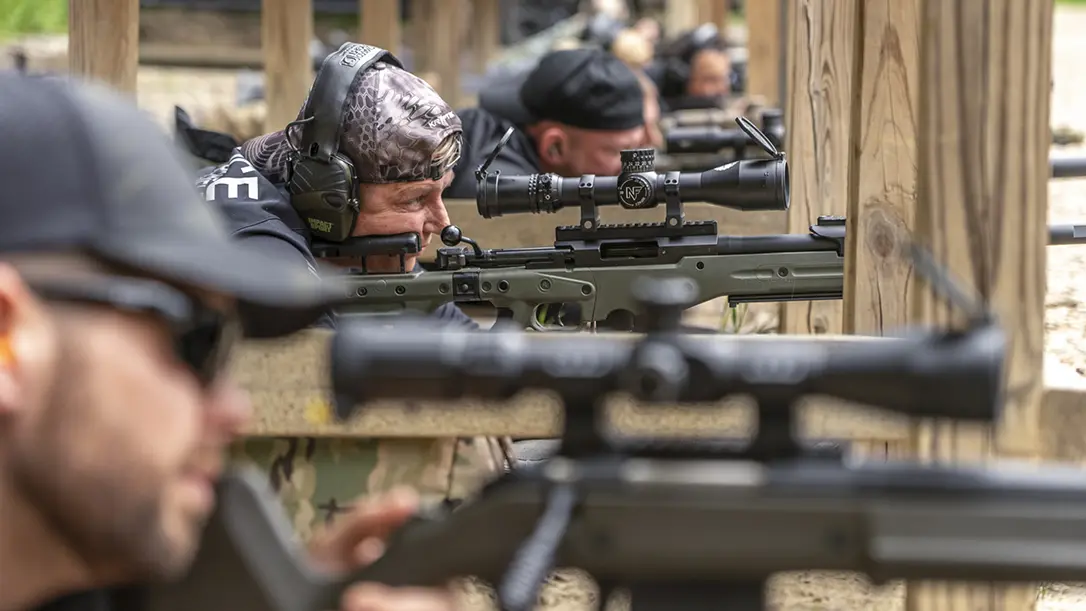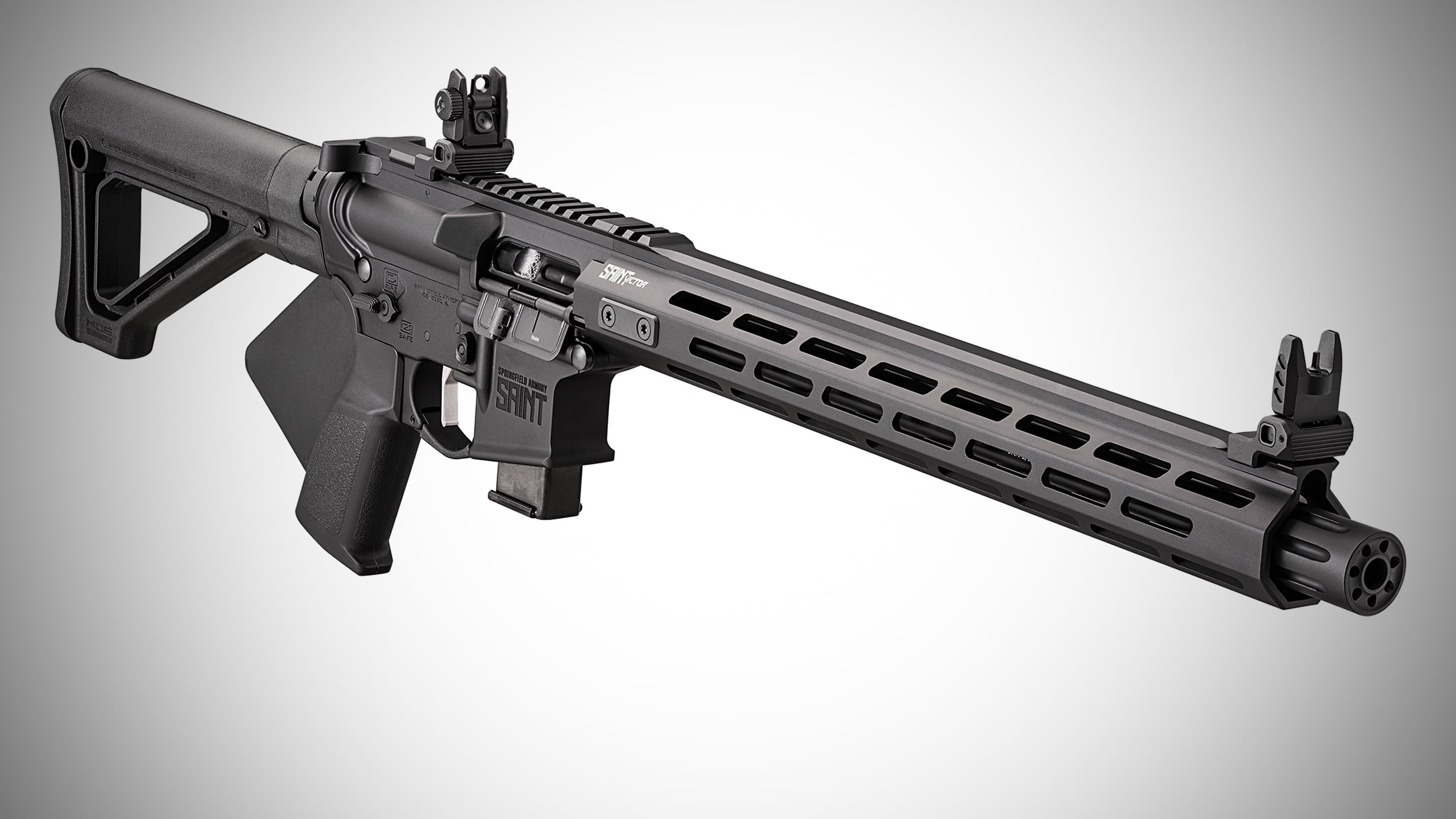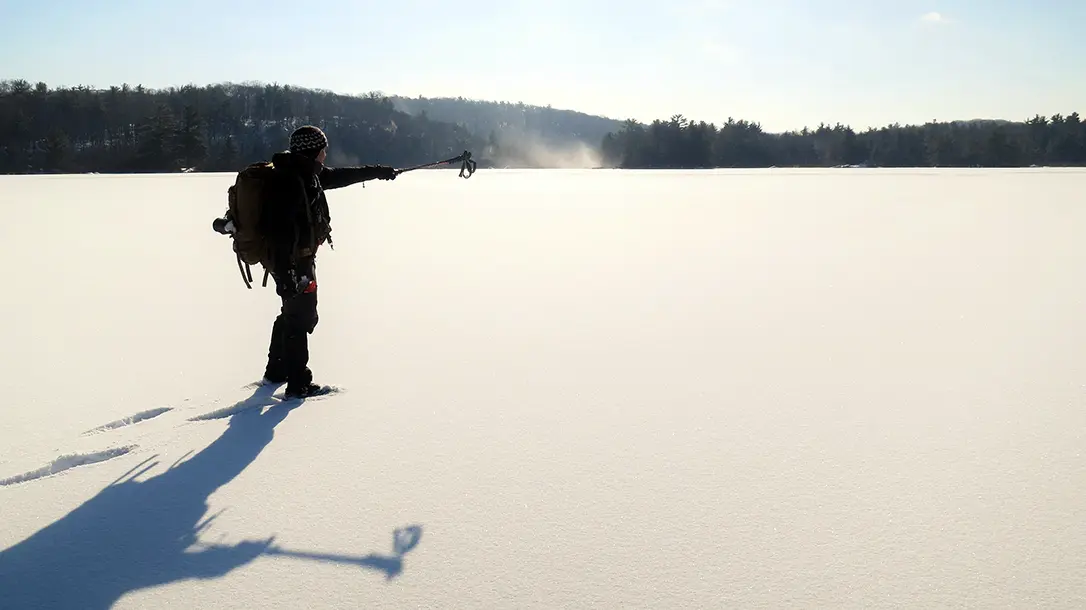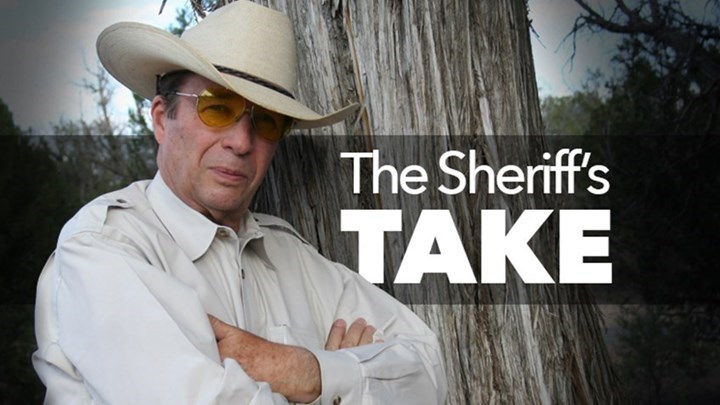Going Long at the Grey Group Basic Sniper Course

I’m not going to lie. I love going to different precision rifle training programs and venues. While there are online schools and videos that can help you learn the discipline, there is still noting more helpful for the precision shooter than a live, in-person, hands-on instructional course. If you haven’t taken one I highly suggest you do from a reputable instructor(s).
Training at the Grey Group Basic Sniper Course
When you embark upon whatever class you decide to take, you’ll likely go into it with the goal of better understanding the precision shooting process as a whole. That may may include things like rifle setup, optics setup, ammo types, ballistics, on top of the proper shooting process. Ultimately your goal is to hit steal with more consistency. But what if you’re a slightly different precision shooter? What if you are a law enforcement sniper? Now it’s part of your job to shoot consistently with precision. What you learn takes on a different meaning, as the responsibilities and stakes in the end are much much higher. As I’ve spent so much time shooting steel, I’ve forgotten that there are men and women who are in that very position and they need training too. Enter Grey Group Security.
I received a call from K. P. Robinson, Lead Sniper Instructor for Grey Group Security. His full-time job is one as an officer in Iowa where he leads a Police Sniper team. This team has 18 snipers on board. That’s no small responsibility. He is responsible for making sure his team is up to the task to make precise shots with lives on the line. Day or night. K.P. asked me if I’d be interested in coming out to the Basic Sniper Course and there was no way I could say no.
I’ll say up front that I didn’t know what to expect going into the course. While this class is labeled as basic, it’s anything but. It’s a fast-track course meant to test the sniper’s current competency and ability and propel them to a higher level of both in just a few days.
Relevant Sniper Training
First, I’m not LE. Never have been. Same goes for military. That said, K.P. is a very progressive LE sniper and trainer. His focus is continually on how to make the training better, more comprehensive and while many of us may hate this word, more relevant. I’ve been closely associated with police snipers and teams for over a decade. We discuss things. While I many not know what they do all the time, I’ve been exposed to what they need. There are different schools of thought out there and while some training is reluctant to move the LE sniper past the prone position at 100 yards, guys like K.P. are adamant about moving beyond that—out of the prone, and beyond 100 yards. Like, way beyond 100 yards.
Why this approach when the average police sniper engagement is 59 yards? Because when we shoot further we learn more about the shooter, rifle, and ammo. We get a greater understanding about ballistics and equipment capabilities. We also dispel myths and uncover helpful information. Shooting further away makes shooting closer easier. Builds confidence. It’s a natural fact, but of course this must be executed properly.
Back to Class
Per the usual, the instruction begins with time in the classroom. Here, K.P. breaks down a massive amount of information that’s lost on the civilian shooter. Things like sniper case law, which gives the reason for what they do. It covers some of the key cases that verify/justify the role and use of snipers. It also reveals that snipers must receive ongoing sniper-specific training. Another goal of the Grey Group course is to train under stress while achieving an optimal level of performance.
From there, the classroom would cover other topics such as hide building and labeling structures, which is the real sniper stuff. Recon and intel. Then K.P. got to the nitty-gritty, discussing the shooting process and all that goes into it, as well as equipment and the absolute need for quality kit that leaves less room for error. Unfortunately for the men and women in the LE sniper role, this gets overlooked all too often.

Range Basics
On the range we started where you might expect. 100 yards, shooting groups, working on consistency, the staple of precision shooting. If you can’t do it at 100 you can’t do it at 200, and likely not even at 50 yards. After that we would move on to more challenging reps, including positional shooting. Yes, positional. I call it dynamic rifle shooting. Many of us refer to it as PRS-style shooting. And it’s this style of shooting that has created some friction within the LE sniper community. While some call is gaming, others, like K.P., call it vital and necessary.
“I think it’s highly important. I recommend to my team, if you can get to a local PRS match, do it,” he said when I asked him if he thought PRS rifle competition was relevant to the sniper. Referring to the said friction he stated, “If we could get over ourselves, I think the PRS community is great for us. It teaches us to get in there and build a position…and now we’re doing it under time, which is the same as doing it under duress…we’ve taught for years to use your backpack, that’s no different from using a bag.”
Competition Influences
I would have said even two or three years ago that what happens in the competitive space doesn’t correlate to other types of precision rifle shooting. But I wouldn’t say that now. I don’t think it’s necessary for anyone to do it to be a good and competent precision rifleman, but it doesn’t slow your progress either. And keep in mind I don’t think competition is necessary, but being trained on the techniques and practicing them can really come in handy.
K.P. brought up a good point during this discussion, that teams (military) bring in competition shooters to teach them how to shoot better. Not tactics. Just shooting. And he’s right. IPSC competitors have taught our most elite teams pistol shooting for decades. And I watched firsthand back in 2019 how PRS-style shooting affected the outcomes of the USASOC International Sniper Competition.

Pushing On
With that aside, the Grey Group training included shooting movers, which by the way is very challenging at 100 yards, shooting from different hides, one being a vehicle hide. That was fun. We partook in some extended ranges, a jungle lane where you spot and range the target, night shooting, and we did some ammo vs. windshield tests, which was very eye opening.
All of the attendees came to realize the importance and challenges of their role as an LE sniper. They also realized the importance of having the right kit, and where their current setups were failing. That’s a hard lesson to watch, but at their level of responsibility, no shortcuts should be taken. Sadly, that decision is not the sniper’s in many cases.
Long-Range Facility

The Grey Group Basic Class takes place at 88 Tactical’s property in somewhere, Nebraska. It’s full of beautiful rolling hills and country. The sleeping quarters in the bunkhouse are more than adequate, if not first rate, with plenty of room to move about, kitchen and amenities, including blazing fast wi-fi. Everything you need to get through a four-night stay.
This topic will go on for a while. My goal is not to say one approach is superior to another. But I have witnessed and had to admit that some approaches afford more in the way of experience. And that’s what happens at The Grey Group Security LE Basic Sniper course—experience. You’ll come out of there better and wanting to be better as a precision marksman, a.k.a. sniper.
If you’re LE and looking for some solid training, look them up at greygroupsecurity.com.







